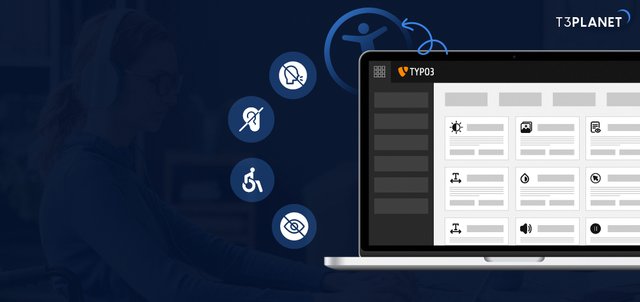Web accessibility is gaining attention, but truly barrier-free websites are still rare. A recent study found that over 96 percent of the top websites are not accessible, making it difficult for people with disabilities to navigate the web with ease.

Why Accessibility Matters in TYPO3
Making your TYPO3 site accessible means more people can use it comfortably. It helps improve user experience, meet legal requirements, and create a more inclusive web presence.
Benefits of a Barrier-Free TYPO3 Site
Common Issues That Affect Accessibility
Some of the most common problems include:
Steps to Build an Accessible TYPO3 Website
Organize Content Clearly
Use a logical heading structure, add alt text to images, and make sure buttons and forms have clear labels.
Select the Right Design Tools
TYPO3 provides templates and extensions that support accessibility. Use those that allow keyboard navigation and screen reader compatibility.
Make the Backend Editor Friendly
TYPO3 also lets you build an accessible backend, making it easier for all team members to manage and update content.
Use Accessibility Tools for Testing
Regularly test your website using accessibility checkers. These tools help you catch and fix issues that could limit access for users with disabilities.
Follow Recognized Guidelines
Stick to standards like WCAG and other accessibility rules to ensure your site is on the right path. These help maintain quality and consistency in how your content is delivered.
Closing Thought
A barrier-free TYPO3 website is not just a goal for compliance. It is a way to make your digital space welcoming and usable for everyone. With the right steps, your website can serve all users equally and effectively.